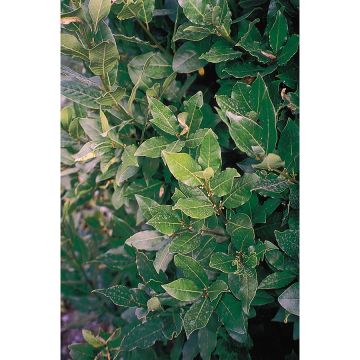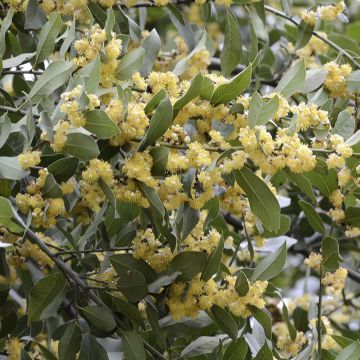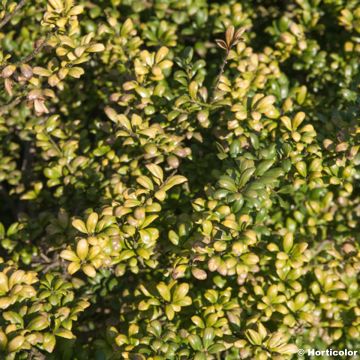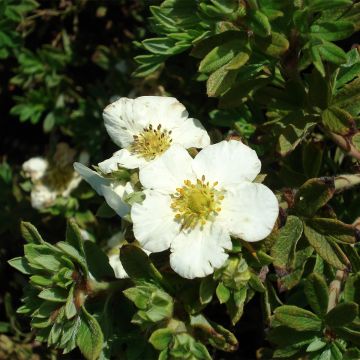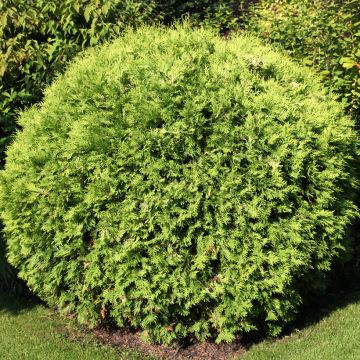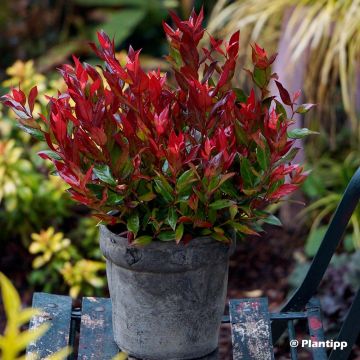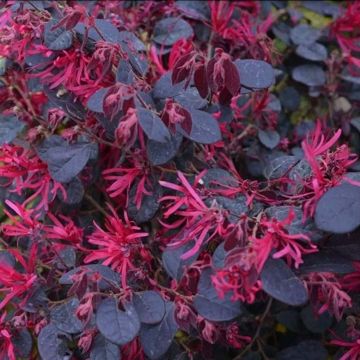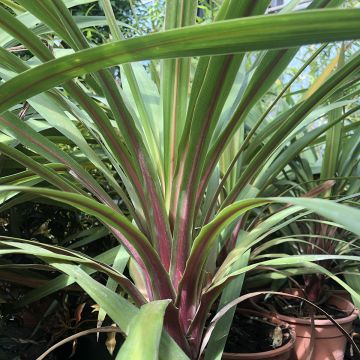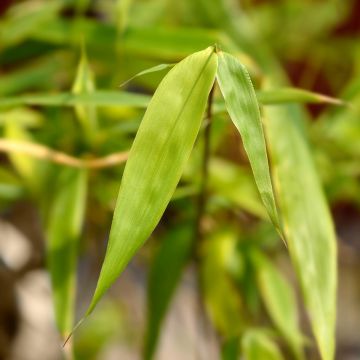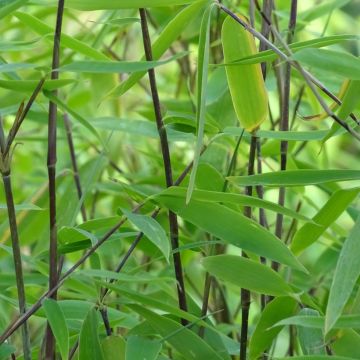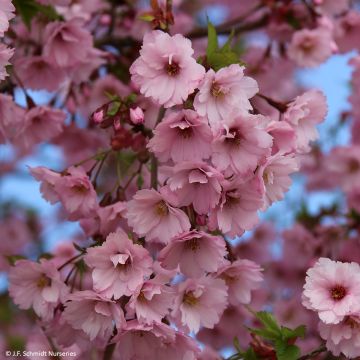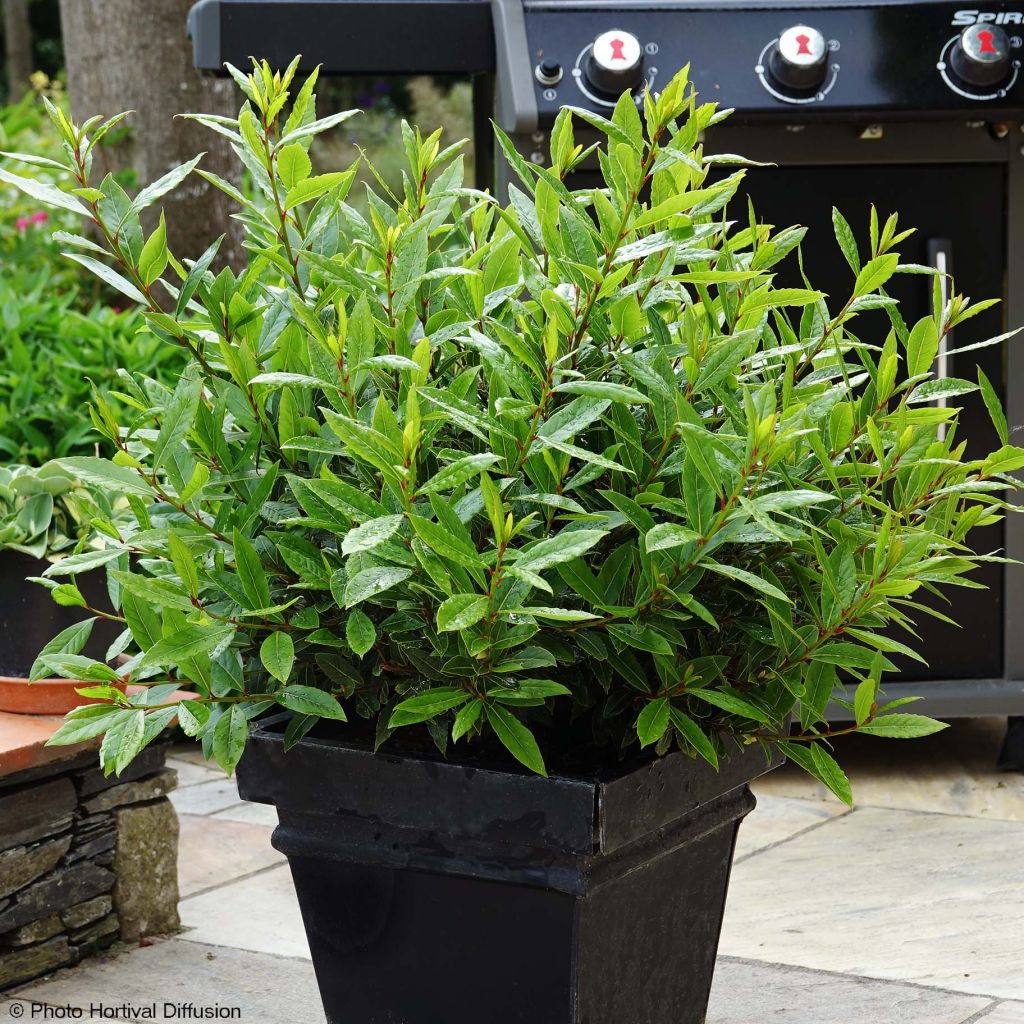

Laurus nobilis Little Ragu - Bay Laurel
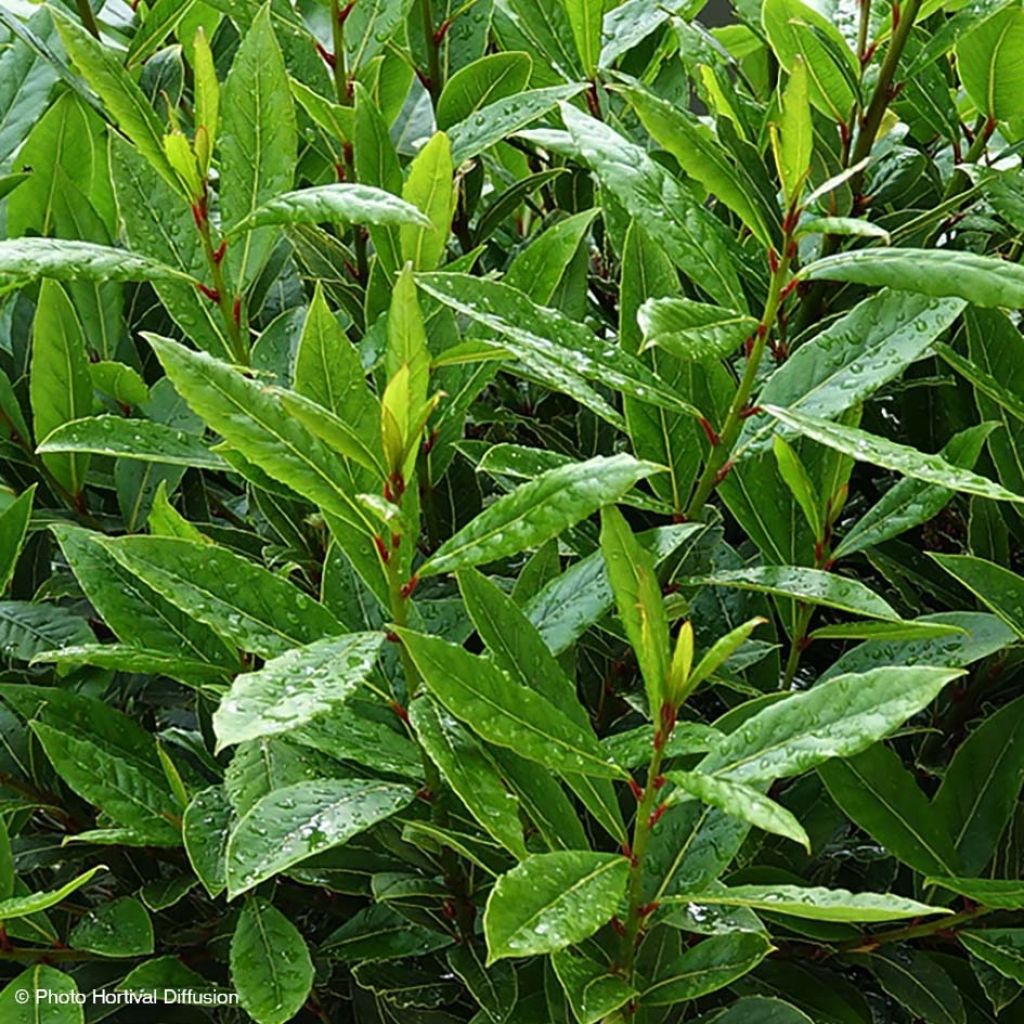

Laurus nobilis Little Ragu - Bay Laurel
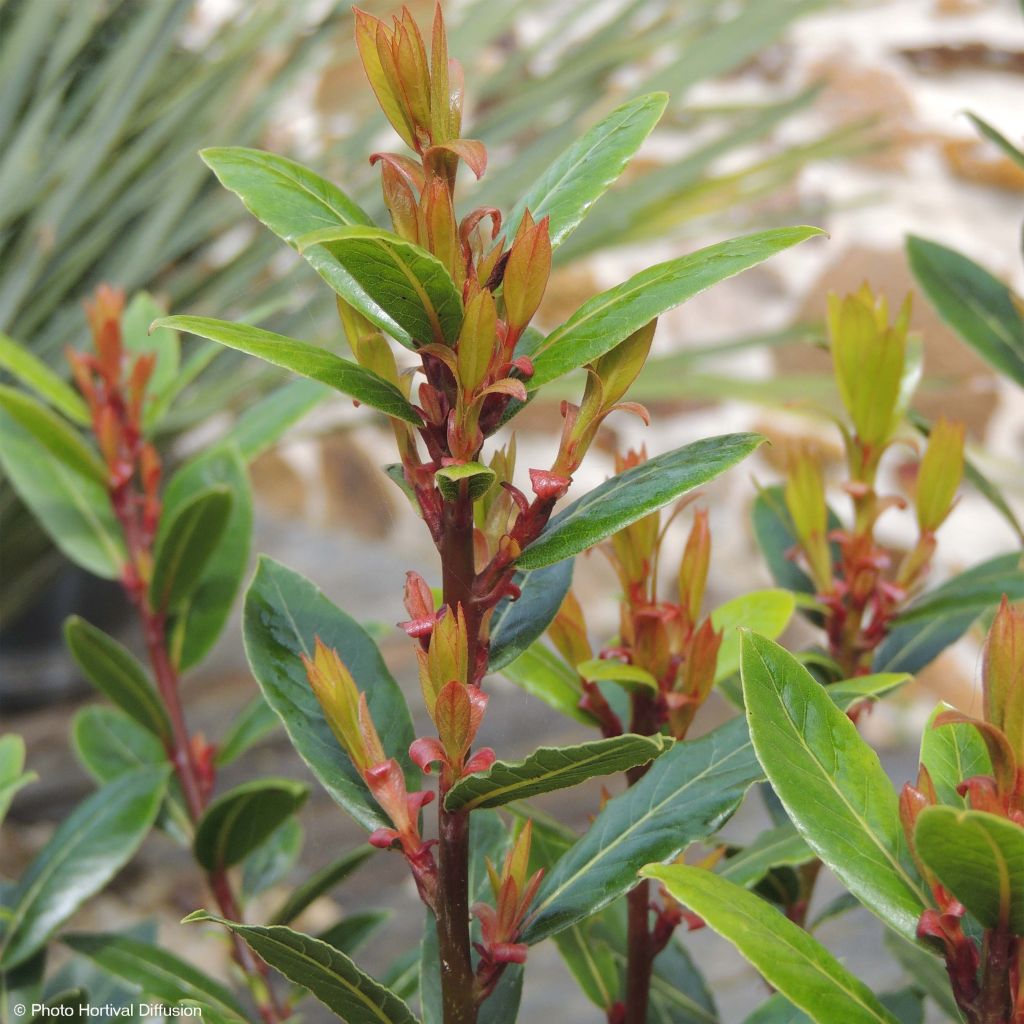

Laurus nobilis Little Ragu - Bay Laurel
Laurus nobilis Little Ragu - Bay Laurel
Laurus nobilis Little Ragu
Bay Laurel, Bay Tree, Sweet Bay
Received my bay laurel a few days ago. Transport and packaging were perfect. Should resume without any problem.
Michèle, 06/05/2021
This item cannot be shipped to the selected country
Delivery charge from €5.90
Delivery to Corse prohibited
More information
Schedule delivery date,
and select date in basket
This plant carries a 24 months recovery warranty
More information
We guarantee the quality of our plants for a full growing cycle, and will replace at our expense any plant that fails to recover under normal climatic and planting conditions.
From €5.90 for pickup delivery and €6.90 for home delivery
Express home delivery from €8.90.
Delivery to Corse prohibited: UE law prohibits the import of this plant from mainland France to Corse as part of the fight against Xylella fastidiosa. Please accept our sincere apologies.
More information

Does this plant fit my garden?
Set up your Plantfit profile →
Description
Laurus nobilis 'Little Ragu' is a bay tree with a more compact habit than the wild form. The very aromatic evergreen foliage, shaded in gold on and borne on red stalks when young, will perfume your cooking. It is a very adaptable plant, resistant to heat and drought. While its hardiness can be found wanting in a cold climate, the bay tree is also capable of enduring severe pruning and growing back from the stump.
The Bay tree, the "noble Laurel", belongs to the Lauraceae family and is by far the most well-known member of this family, which includes many interesting but still not widespread woody species such as Sassafras, Lindera or Neolitsea. The bay tree is a large bush or small tree native to the Mediterranean Basin and Asia Minor, where it favours the hot, dry and open ecosystem called mattoral, though it can also be found in riparian zones. The dark green evergreen foliage, very familiar, is highly aromatic and has been used for a long time in the making of the culinary herb preparation known as bouquets garnis, used alongside thyme, rosemary and other herbs to perfume dishes. Be careful not to confuse it with the Cherry Laurel (Prunus laurocerasus), a species from the Rosaceae family often used in hedges, or with the Oleander (Nerium oleander), as both are extremely toxic. Between March and April the bay tree produces small yellow-green flowers, which on female plants (and in the right climate) will yield small black non-edible berries. The stems are dark green, almost black, becoming greyer as they thicken.
'Little Ragu' is a variety with a fairly compact habit: while the wild species can exceed 8 m (26 ft) in height in the right climate, this one will not exceed 1.50 to 2 m (5 to 7 ft) in height and about 1.50 m (5 ft) in width. The young foliage of 'Little Ragu', carried by elegant petioles and reddish stems, is a beautiful golden green at budding, then darkens until it takes the typical dark green colour of bay trees. It is also narrower and more elongated than the foliage of the wild type, but just as aromatic.
The Noble Laurel 'Little Ragu', due to its Mediterranean origins, is capable of enduring dry and hot periods without flinching. Its hardiness remains relatively limited, and is estimated around -10/-12°C (14/10.4 °F), even if a well-established and sheltered bush can actually withstand -15°C (5 °F) without problem. At worst, the plant will lose its branches and grow back from the stump (which also allows it to be occasionally cut back hard). In any case, they prefer to be sheltered from cold winds, in a bright and warm spot, in very well-drained or even stony soil, but not too poor. Furthermore, the bay tree tolerates pruning very well, even hard pruning, and it can easily be shaped into topiary. It is also very easy to take cuttings from it, using cut branches or by taking offshoots at the base.
Perfect in Mediterranean or exotic themed gardens, the bay tree 'Little Ragu' will provide a colourful backdrop for your flower beds. It can even be used as an evergreen hedge, remembering to protect it well from cold winds. Its compactness also makes it appropriate for a large pot, which can be brought indoors in winter if severe frost is expected, allowing you to decorate a patio or balcony while enjoying its aroma!
Report an error about the product description
Laurus nobilis Little Ragu - Bay Laurel in pictures
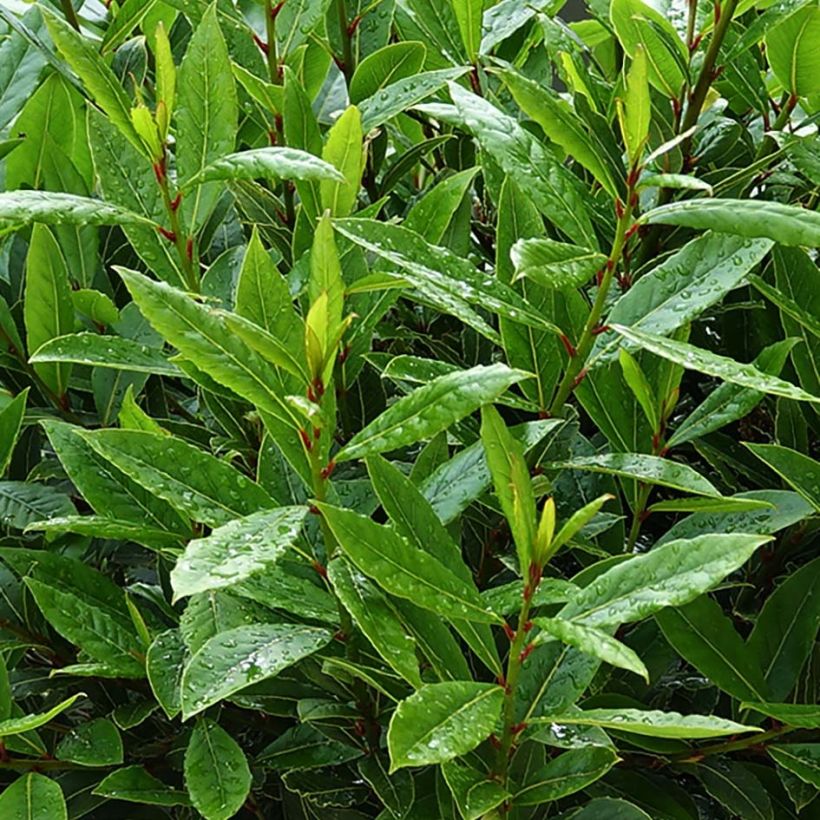

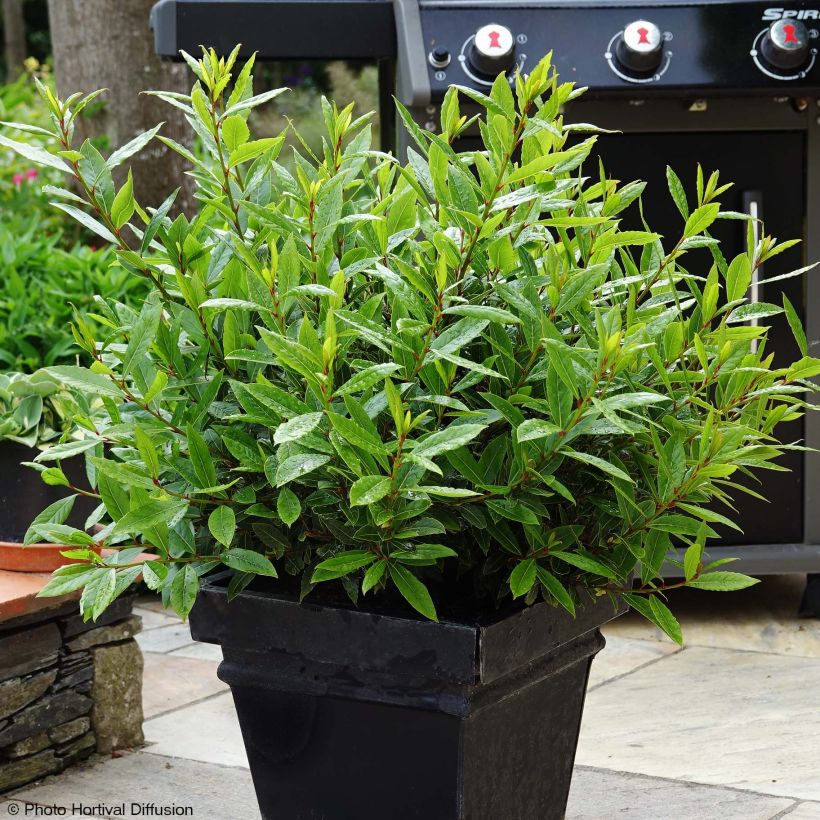

Plant habit
Flowering
Foliage
Botanical data
Laurus
nobilis
Little Ragu
Bay Laurel, Bay Tree, Sweet Bay
Mediterranean
Other Bay laurel
Planting and care
The 'Little Ragu' Bay Laurel, due to its Mediterranean origins, is capable of enduring dry and hot periods without flinching. Its hardiness is relatively limited, estimated around -10/-12°C (14/10.4 °F), even though a well-established and sheltered bush can actually withstand -15°C (5 °F) without a problem. At worst, the plant will lose its branches and regrow from the stump (which also allows for occasional coppicing). In any case, they favour a location sheltered from cold winds, bright and warm, in very well-drained even stony soil, but not too poor. The bay laurel tolerates pruning very well, even severe, and it can easily be shaped into topiary. It is also very easy to propagate it by cuttings, using cut branches or by taking suckers from the base.
Planting period
Intended location
Care
-
, onOrder confirmed
Reply from on Promesse de fleurs
Shrubs for pots
Haven't found what you were looking for?
Hardiness is the lowest winter temperature a plant can endure without suffering serious damage or even dying. However, hardiness is affected by location (a sheltered area, such as a patio), protection (winter cover) and soil type (hardiness is improved by well-drained soil).

Photo Sharing Terms & Conditions
In order to encourage gardeners to interact and share their experiences, Promesse de fleurs offers various media enabling content to be uploaded onto its Site - in particular via the ‘Photo sharing’ module.
The User agrees to refrain from:
- Posting any content that is illegal, prejudicial, insulting, racist, inciteful to hatred, revisionist, contrary to public decency, that infringes on privacy or on the privacy rights of third parties, in particular the publicity rights of persons and goods, intellectual property rights, or the right to privacy.
- Submitting content on behalf of a third party;
- Impersonate the identity of a third party and/or publish any personal information about a third party;
In general, the User undertakes to refrain from any unethical behaviour.
All Content (in particular text, comments, files, images, photos, videos, creative works, etc.), which may be subject to property or intellectual property rights, image or other private rights, shall remain the property of the User, subject to the limited rights granted by the terms of the licence granted by Promesse de fleurs as stated below. Users are at liberty to publish or not to publish such Content on the Site, notably via the ‘Photo Sharing’ facility, and accept that this Content shall be made public and freely accessible, notably on the Internet.
Users further acknowledge, undertake to have ,and guarantee that they hold all necessary rights and permissions to publish such material on the Site, in particular with regard to the legislation in force pertaining to any privacy, property, intellectual property, image, or contractual rights, or rights of any other nature. By publishing such Content on the Site, Users acknowledge accepting full liability as publishers of the Content within the meaning of the law, and grant Promesse de fleurs, free of charge, an inclusive, worldwide licence for the said Content for the entire duration of its publication, including all reproduction, representation, up/downloading, displaying, performing, transmission, and storage rights.
Users also grant permission for their name to be linked to the Content and accept that this link may not always be made available.
By engaging in posting material, Users consent to their Content becoming automatically accessible on the Internet, in particular on other sites and/or blogs and/or web pages of the Promesse de fleurs site, including in particular social pages and the Promesse de fleurs catalogue.
Users may secure the removal of entrusted content free of charge by issuing a simple request via our contact form.
The flowering period indicated on our website applies to countries and regions located in USDA zone 8 (France, the United Kingdom, Ireland, the Netherlands, etc.)
It will vary according to where you live:
- In zones 9 to 10 (Italy, Spain, Greece, etc.), flowering will occur about 2 to 4 weeks earlier.
- In zones 6 to 7 (Germany, Poland, Slovenia, and lower mountainous regions), flowering will be delayed by 2 to 3 weeks.
- In zone 5 (Central Europe, Scandinavia), blooming will be delayed by 3 to 5 weeks.
In temperate climates, pruning of spring-flowering shrubs (forsythia, spireas, etc.) should be done just after flowering.
Pruning of summer-flowering shrubs (Indian Lilac, Perovskia, etc.) can be done in winter or spring.
In cold regions as well as with frost-sensitive plants, avoid pruning too early when severe frosts may still occur.
The planting period indicated on our website applies to countries and regions located in USDA zone 8 (France, United Kingdom, Ireland, Netherlands).
It will vary according to where you live:
- In Mediterranean zones (Marseille, Madrid, Milan, etc.), autumn and winter are the best planting periods.
- In continental zones (Strasbourg, Munich, Vienna, etc.), delay planting by 2 to 3 weeks in spring and bring it forward by 2 to 4 weeks in autumn.
- In mountainous regions (the Alps, Pyrenees, Carpathians, etc.), it is best to plant in late spring (May-June) or late summer (August-September).
The harvesting period indicated on our website applies to countries and regions in USDA zone 8 (France, England, Ireland, the Netherlands).
In colder areas (Scandinavia, Poland, Austria...) fruit and vegetable harvests are likely to be delayed by 3-4 weeks.
In warmer areas (Italy, Spain, Greece, etc.), harvesting will probably take place earlier, depending on weather conditions.
The sowing periods indicated on our website apply to countries and regions within USDA Zone 8 (France, UK, Ireland, Netherlands).
In colder areas (Scandinavia, Poland, Austria...), delay any outdoor sowing by 3-4 weeks, or sow under glass.
In warmer climes (Italy, Spain, Greece, etc.), bring outdoor sowing forward by a few weeks.

































